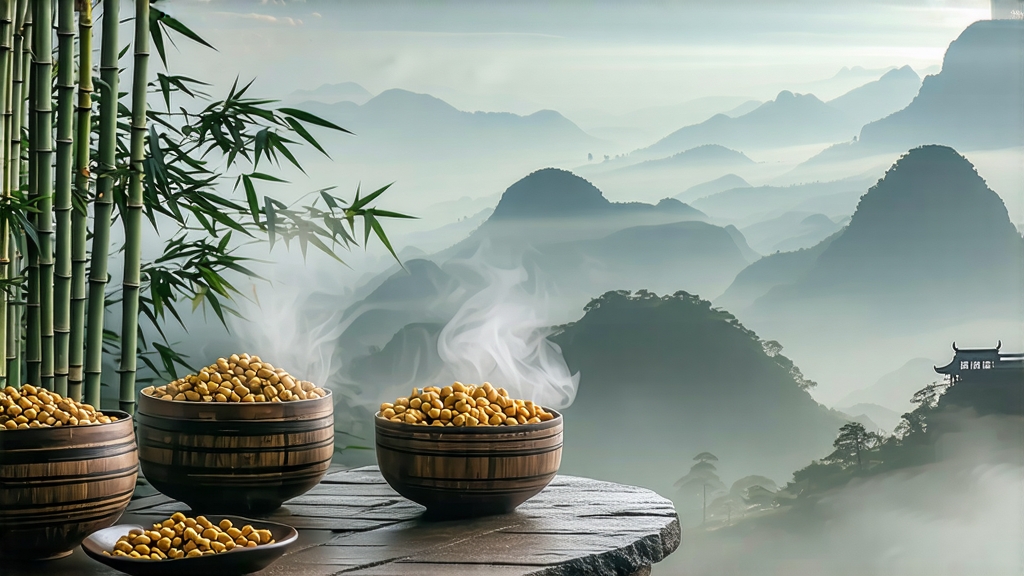
Tucked high in the mist-veiled Dabie Mountains of western Anhui Province, a tea once reserved for emperors still quietly resists the march of time. Huoshan Huangya—literally “Yellow Buds of Huoshan”—is the least-known yet most aristocratic member of China’s tiny yellow-tea family. While green tea dominates export statistics and dark pu-erh fills auction headlines, Huoshan Huangya survives in a handful of villages where the same family clans have repeated a 2 000-year-old ritual of “sweating” fresh leaves until they glow like pale gold. To understand this tea is to witness a living fossil of Chinese taste: a flavor that was considered more refined than Longjing, more soothing than silver-needle white, yet almost vanished during the twentieth century. This essay invites the international reader to walk the narrow stone paths of Huoshan, inhale the chestnut-sweet steam rising from bamboo baskets, and learn why a tea that never left China for centuries is now quietly captivating sommeliers from Paris to Melbourne.
Historical tapestry
The first written record appears in the Shennong Bencaojing (Divine Farmer’s Materia Medica), circa 2nd century BCE, which lists “Huoshan yellow sprout” as a detoxifying herb. By the Tang dynasty (618-907) the tea had become a frontier currency; compressed cakes of Huangya were traded for Mongolian horses along the Silk Road’s mountain spur. When the Song court moved south to Hangzhou, imperial tasters re-discovered the tea’s cool, orchid-like finish and decreed it gong cha—“tribute tea.” Each spring, frozen mule trains carried the first picking across 600 km of mountain passes to arrive before the Qingming festival; any farmer who missed the deadline faced exile. The Ming reversed the tribute system, yet the Qing Qianlong Emperor so adored Huangya that he stationed a censor in Huoshan to guarantee authenticity. The 1911 revolution ended imperial tributes, and the tea retreated into village obscurity until 1972, when Premier Zhou Enlai served it to Henry Kissinger during secret diplomacy in Beijing, inadvertently sparking a tiny renaissance that still hovers below the radar.
Terroir and cultivar
Huoshan county lies at 31°N, the same latitude as India’s Darjeeling, but the Dabie range traps humid air from the Yangtze floodplain, creating 220 fog-bound days per year. Day-night temperature swings of 15 °C slow leaf growth, concentrating amino acids; the soil is Phyllite shale rich in selenium and zinc, minerals that translate into a tingling minerality on the tongue. The micro-zone prized above all is Jinji Mountain’s north-facing slope at 800 m, where wild magnolias and bamboo filter 30 % of sunlight, prompting the tea bush to synthesize more linalool, the compound responsible for Huangya’s signature magnolia aroma. The traditional cultivar is “Huoshan early-bud,” a Camellia sinensis var. sinensis landrace with unusually small, serrated leaves that turn canary-yellow after the unique “menhuang” fermentation step.
Craft: the art of “sweating” gold
Yellow tea is often mis-described as “green tea with an extra step.” In reality, menhuang is a controlled re-fermentation that demands the reflexes of a sushi master. Picking begins when 60 % of buds still wear their winter down, usually between 5–9 a.m. on the 20th of March. Only the standard “one bud with one unfolded leaf” is plucked; 50 000 such sets yield barely 500 g of finished tea. The leaves are spread 3 cm thick on bamboo trays and withered for 90 minutes in mountain shade, reducing moisture to 68 %. Next comes the kill-green: woks are heated to 160 °C, then cooled to 120 °C within 40 seconds by splashing spring water onto the iron. The tea master tosses 250 g batches with a rhythmic clap that sounds like castanets; 3 minutes later the leaf temperature reaches 85 °C, arresting oxidation yet preserving the yellow enzymes. While green tea would now be rolled and dried, Huangya enters its secretive menhuang phase: the hot leaves are piled inside a linen sack, covered with magnolia leaves, and left in a humid 35